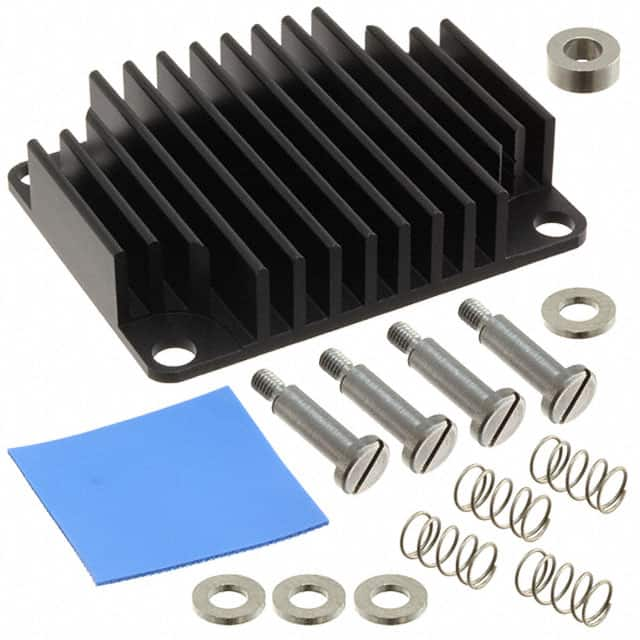IFF Series, Heat Sinks
Results:
1
Filters
Applied Filters:
IFF
About Heat Sinks
Passive heat exchangers play a crucial role in dissipating the heat generated by electronic components and maintaining their optimal operating temperature. These devices transfer the excess heat to a fluid medium, typically air or a liquid coolant, effectively removing it from the component. The design of passive heat exchangers is focused on maximizing the contact surface area between the heat exchanger and the surrounding medium. By increasing the surface area, more heat can be transferred and dissipated efficiently. This is achieved through various design elements such as fins, ridges, or extended surfaces that protrude from the main body of the heat exchanger. These features enhance the heat transfer process by providing additional surface area for the heat to be transferred to the fluid medium. To ensure effective heat transfer, passive heat exchangers are commonly made from materials with high thermal conductivity, such as copper or aluminum. These materials allow for efficient transmission of heat from the electronic component to the heat exchanger and then to the surrounding medium. Copper and aluminum are preferred due to their excellent thermal properties, lightweight nature, and cost-effectiveness. Passive heat exchangers can take different forms depending on the application and cooling requirements. They can be found in various electronic systems, including computer processors, graphics cards, power electronics, and LED lighting, among others. The specific design and configuration of the heat exchanger may vary based on factors such as power dissipation levels, available space, and desired cooling performance. In summary, passive heat exchangers are essential components in electronics that facilitate the transfer of heat generated by electronic components to a fluid medium. They are designed to maximize the contact surface area and are typically constructed using materials with high thermal conductivity. By efficiently dissipating heat, these heat exchangers help maintain the optimal operating temperature of electronic devices, ensuring their reliability and longevity.

